Heroic Destroyer USS Samuel B. Roberts Is Now the Deepest Wreck Ever Discovered
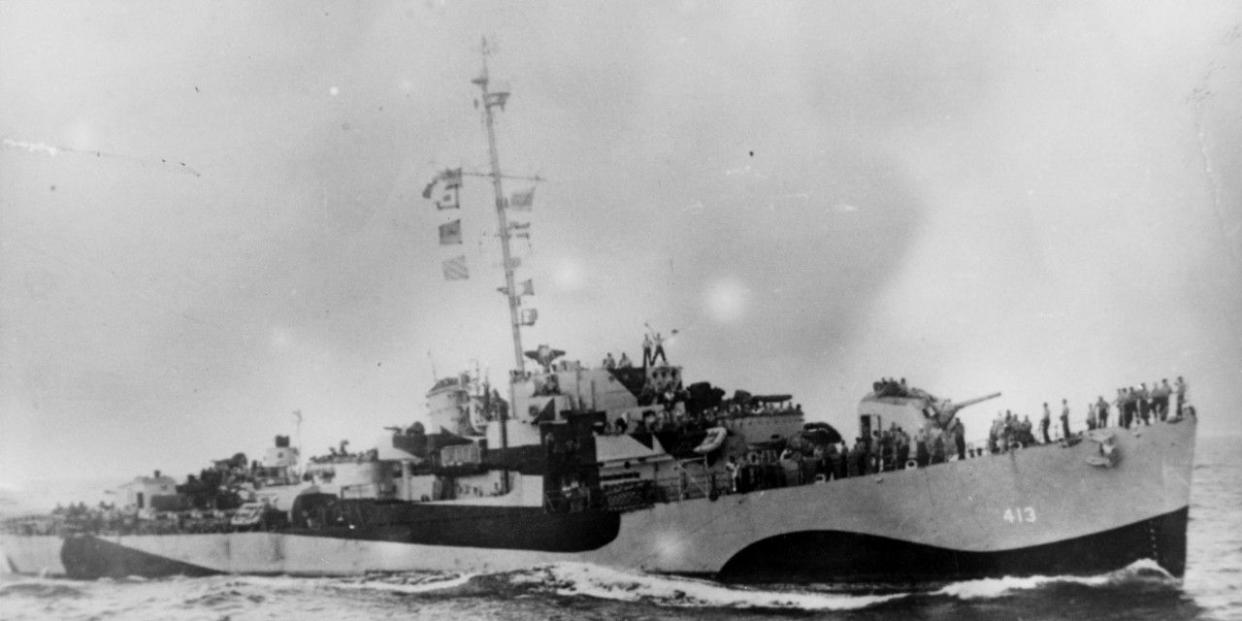
An underwater expedition has discovered the final resting place of the destroyer escort USS Samuel B. Roberts.
Samuel B. Roberts was sunk in the Battle off Samar, one of the most fabled battles of the U.S. Navy.
The destroyer escort was located in the Philippine Sea in waters more than four miles deep.
Explorers located the remains of a U.S. Navy destroyer escort sunk in a major World War II battle off the coast of the Philippines. USS Samuel B. Roberts, sunk in the Battle off Samar, was discovered more than 22,000 feet below the surface of the Pacific Ocean last week. Roberts was sunk while defending a task force of vulnerable escort carriers against a much more powerful Japanese force. The plucky ship was later nicknamed “The Destroyer That Fought Like a Battleship.”
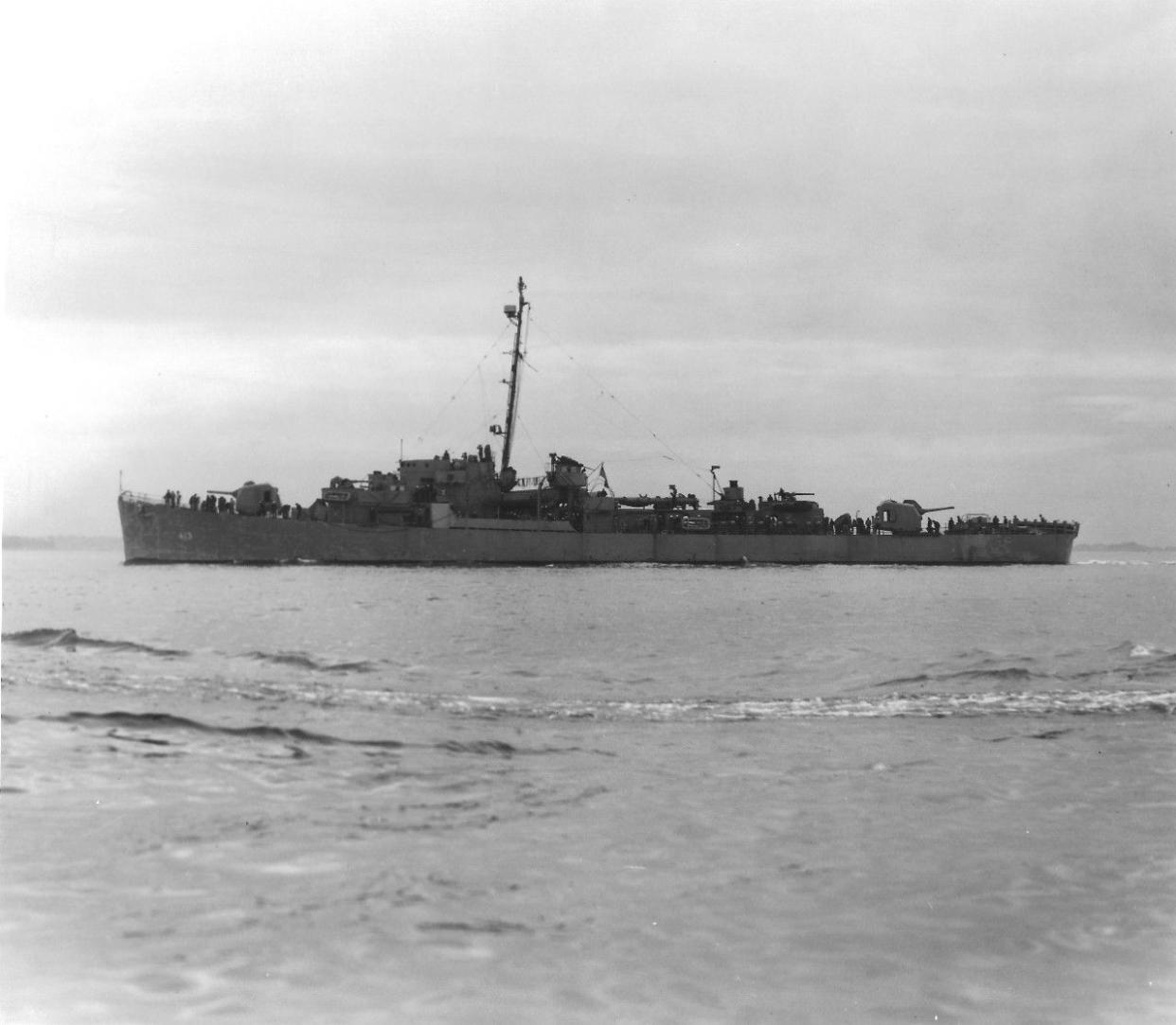
Victor Vescovo, a former U.S. naval officer, along with Seattle, Washington-based EYOS Expeditions, discovered the wreck of the Samuel B. Roberts on June 22. Vescovo piloted his undersea submersible Limiting Factor to the wreck of the destroyer escort, locating it in the Philippine Sea at a depth of 22,621 feet. Roberts is the deepest wreck ever to be discovered in the world’s oceans, according to a June 24 EYOS press release.
According to Vescovo, who documented the dive on his Twitter feed, the team discovered a triple-tube torpedo rack belonging to Roberts on June 18. Vescovo, piloting his submersible, discovered the rest of the ship four days later. Vescovo noted “her bow hit the seafloor with some force, causing some buckling. Her stern also separated about 5 meters on impact, but the whole wreck was together.”
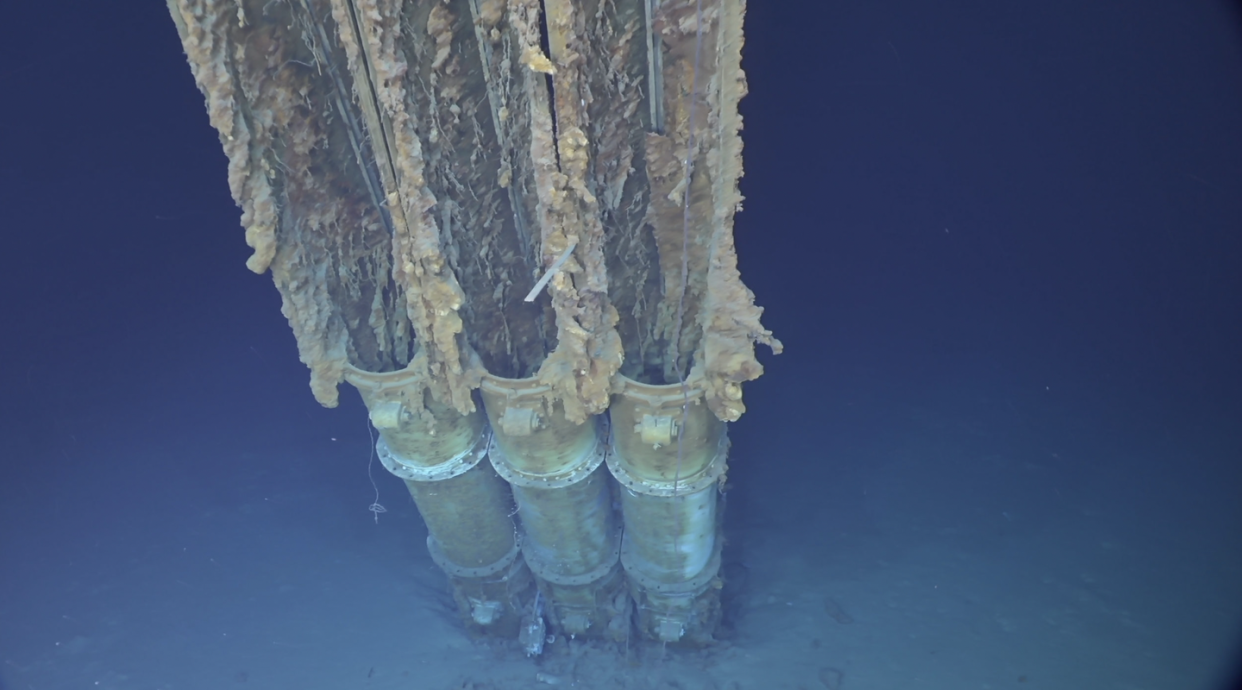
USS Samuel B. Roberts was named after Coxswain Samuel B. Roberts, a U.S. Navy reservist killed in action at Guadalcanal and posthumously awarded the Navy Cross. Commissioned on April 28, 1944, Samuel B. Roberts displaced 1,745 tons and was 306 feet long. The destroyer escort could make 24 knots and had a crew of 224. It was armed with two five-inch guns, four 40-millimeter anti-aircraft guns, ten 20-millimeter anti-aircraft guns, three 21-inch torpedo tubes for surface attack, and three depth charge projectors for anti-submarine attack.
Although it bore a strong resemblance to a destroyer (DD), Roberts was actually a destroyer escort (DE), a ship smaller than a traditional destroyer with a focus on providing anti-air and anti-submarine defense to larger, less protected ships.
Roberts was lost during the Battle off Samar, one of the most dramatic surface actions in the history of the United States Navy. Part of the Battle of Leyte, the event saw three escort carrier groups suddenly left to fend for themselves as a Japanese offensive lured away stronger, more powerful elements of the allied battle fleet.
Roberts was part of Task Group, 77.4.3, known by its radio call sign “Taffy 3,” the northwestern-most escort carrier group. Taffy 3 consisted of six lightly armed escort carriers, three destroyers, and four destroyer escorts—including Samuel B. Roberts. The six carriers and their 200 aircraft were providing an anti-submarine warfare screen and air support to ground forces for amphibious landings in the Philippines.
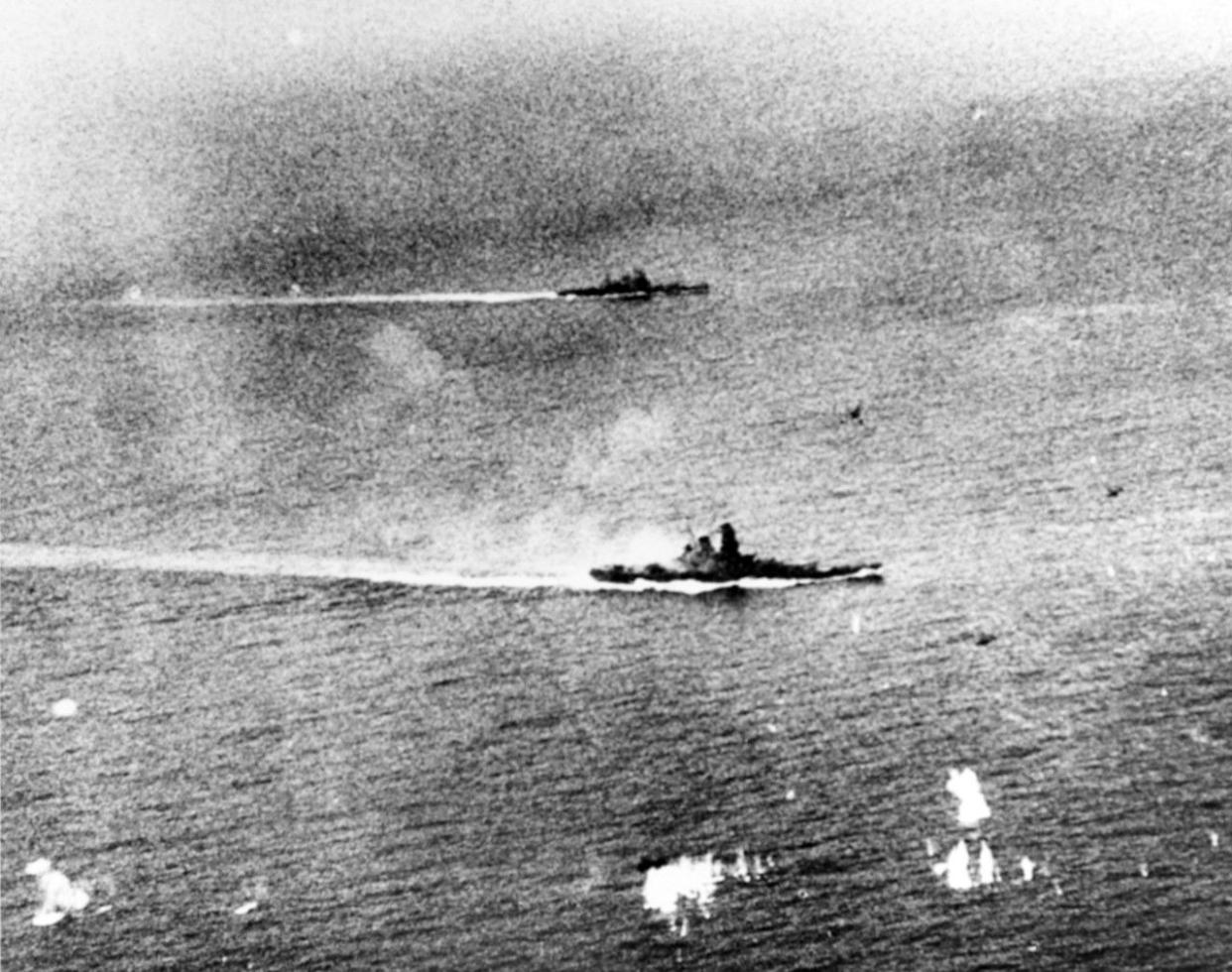
In the early morning hours of October 25, 1944, Taffy 3 was alarmed to discover an approaching Japanese surface action group. The Japanese group consisted of four battleships—including the most powerful battleship afloat at the time, Yamato—eight cruisers, and 11 destroyers. The American group was heavily outnumbered by ship tonnage and firepower. Although the escort carriers included approximately 150 aircraft, they had little in the way of anti-ship munitions useful against the enemy fleet.
Taffy 3’s escorts quickly swung into action, placing themselves between the enemy and their six lightly armored escort carriers, with about 5,000 sailors between them. The seven escorts took on the vastly more powerful Japanese fleet, firing a salvo of torpedoes and then zig-zagging as they closed with battle wagons many times their size. The hope was that the escorts could distract the enemy long enough for the light carriers to flee, or for reinforcements to arrive.
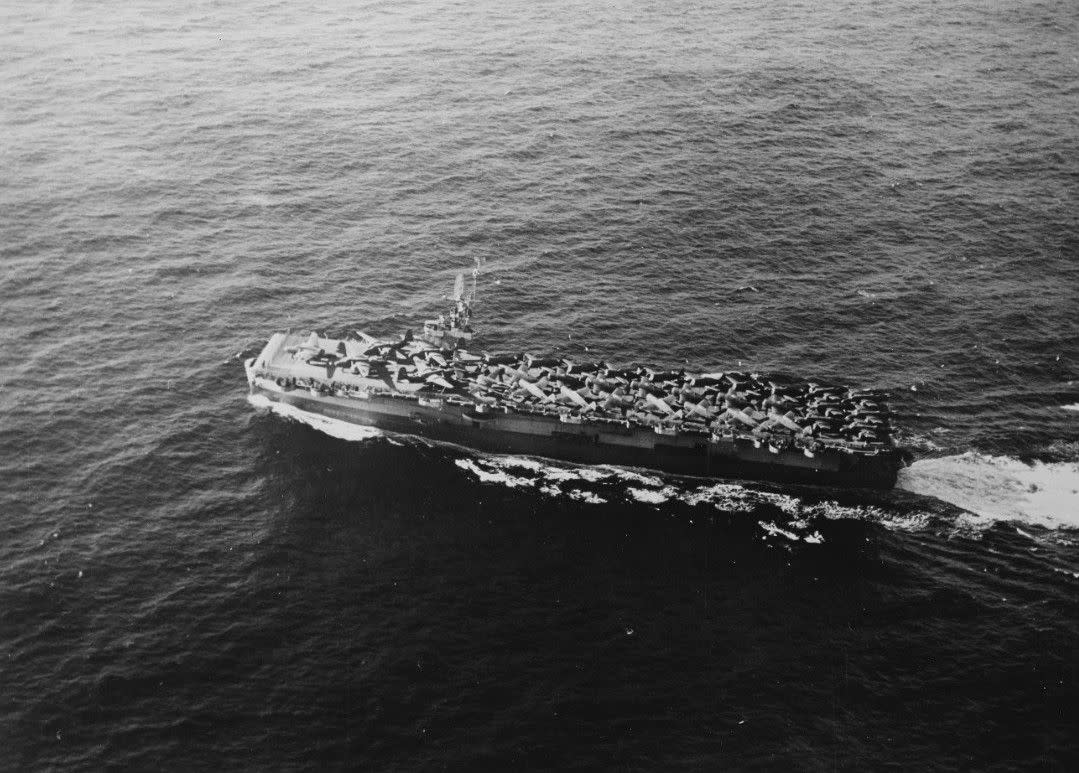
Samuel B. Roberts was one of several ships lost that day. Despite evasive action, the tiny destroyer escort received several hits from 14-inch guns, delivered by either the battleships Kongo or Haruna, hits meant to destroy ships 30 or more times their own size. According to the official U.S. Navy history, the hits “ tore an over 30 feet-long gash on the destroyer escort’s port side, obliterated the No. 2 engine room, ruptured fuel tanks, and started fires. All power and communications were lost, and Samuel B. Roberts was abandoned at 0910.”
Ninety of Roberts’s crew were killed in the action, and the skipper, Lieutenant Commander Robert W. Copeland, won the Navy Cross.
The exact location of the Roberts wreck is undisclosed, and will likely stay that way. World War II shipwrecks in the western Pacific have gone missing in recent years, the victims of black market scrappers. At more than four miles deep, USS Roberts is unlikely to go missing any time soon, but it’s just good policy to keep the location of these ships—essentially grave sites—vague.
You Might Also Like
